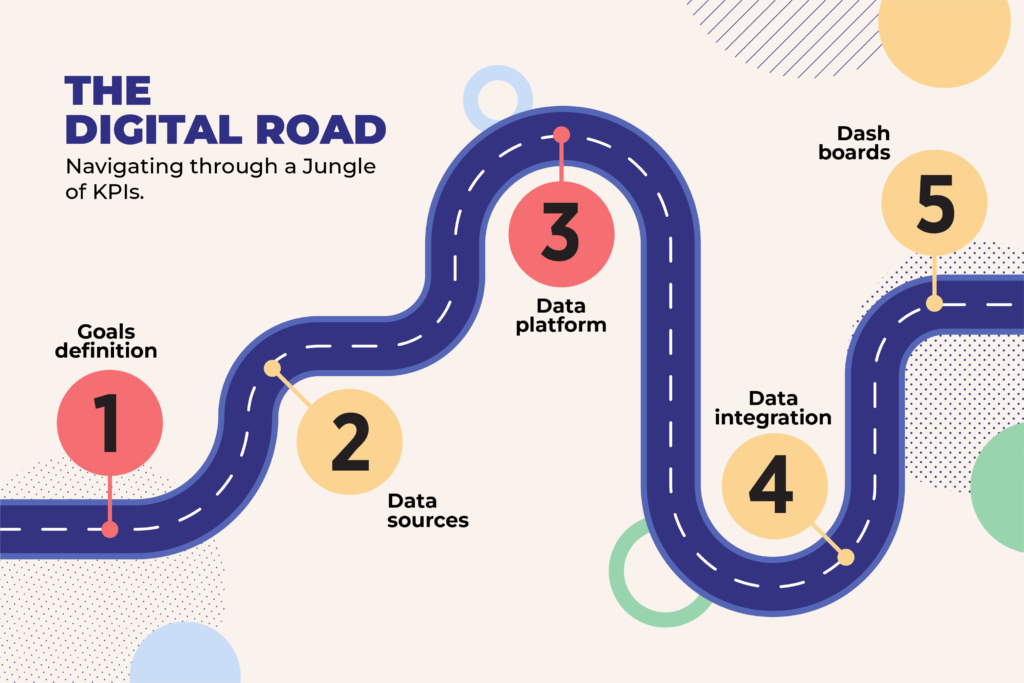When working with my clients, it sometimes goes along the same storyline. Of course, they want to transform. And they want to experience digital at the same time. But I learn from their questions, asked or un-asked, that the end game still stays foggy for them, sometimes even in complete darkness. They are blind, neither able to see the road nor the destination. Undoubtedly, they are missing the goal to strive for: the vision for Digital Transformation.
The theme of sustainability I introduced in my July 1st blog describes 17 goals altogether, defined by the UN. Seventeen. Everybody who holds a scientific degree or possesses enough common sense knows that an organization striving for more than five strategic goals will get confused by the sheer number of goals. Therefore, the less is more. Selecting the goals relevant to an organization would be the first step.
Striving for sustainability in the UN definition is a broad undertaking. You should ask your managers, teams, and colleagues to determine their main concerns when hearing ‘sustainability.’ I recently learned that people would mostly think of Green House Gases (GHG) and water. Make a test – and tell me if I’m right or wrong.
Oxford Languages explains sustainability as “avoidance of the depletion of natural resources in order to maintain an ecological balance.” While we know there are also economic and social components to the term, I’m pretty sure that your test I suggested above will result in a strong focus on the environment. Ecological balance implies a focus on fuel consumption and water. As such, Oxford slimmed down the overall goals from 17 to two. I consider two strategic goals much easier to manage. The first step to navigate through unknown terrain is the definition of a manageable number of goals.
Clarifying Green House Gases, I’m thinking primarily of fuel consumption: diesel, kerosene, petrol, natural gas, and all its derivates. When used, these fuels produce carbon dioxide (CO2), a prominent contributor to the warming of our planet Earth. Of course, there are more powerful gases impacting our atmosphere; but the magnitude of CO2 occurrence suggests we’d focus on cars, trucks, and airplanes at first hand. Fuel and water are the areas that are visible and touchable for everybody. By defining these two strategic fields, the only question is: how do we move the needle to make things better?
Foremost, we need to get the data points of all consumptions. We’d have to capture all fuel data from all vehicles on land, sea, and air. And we’d have to capture all water consumption data from all buildings, manufacturing sites, and households. But it’s a non-starter: collecting data from ‘everybody’ seems utterly impossible. Why would you think everybody would participate in this humongous data collection effort with enough privacy laws in place to shield them from you? By 2021, Hedges & Company projects nearly 290 million registered cars within the US alone.
This mass-volume data collection problem leaves us with one option that might be feasible. Instead of targeting every single car with its fuel consumption, we would focus on businesses and ‘convince’ them to publish their sustainability reports and balance sheets.
From paying their energy and water bills, the businesses know what their manufacturing, operation, and employees would use up in terms of resources. Corporate accounts for direct energy and water consumption could provide the data foundation to start with. Additionally, indirect fuel consumption could be calculated using other corporate accounts that capture the cost, for example, for their employees’ air travel.
The Road to Digital requires the integration of these corporate accounts with a central sustainability data platform. Integration would ensure automatic data collection along with data consolidation. Assuming a perfect data integration, the sustainability leaders could show off even real-time data and measures corporatewide to both the headquarters and the manufacturing sites, with well-designed and easy-to-understand dashboards. Real-time visualizations that show as-is KPIs versus to-be KPIs would be compelling. It would be the foundation to influence behavioral changes of the assets companies usually care about most: their own employees.
In summary: building a Digital Road to Sustainability as part of a company’s transformational strategic vision requires only a few building blocks:
- Defining the (very) few goals a company wants to achieve
- Identifying the data sources needed
- Building the data platform
- Integrating the data sources with the platform
- Publishing powerful visualizations on dashboard
To get more insight into achieving building block three, this webinar might help you better understand the initiation and launch of a data platform.


